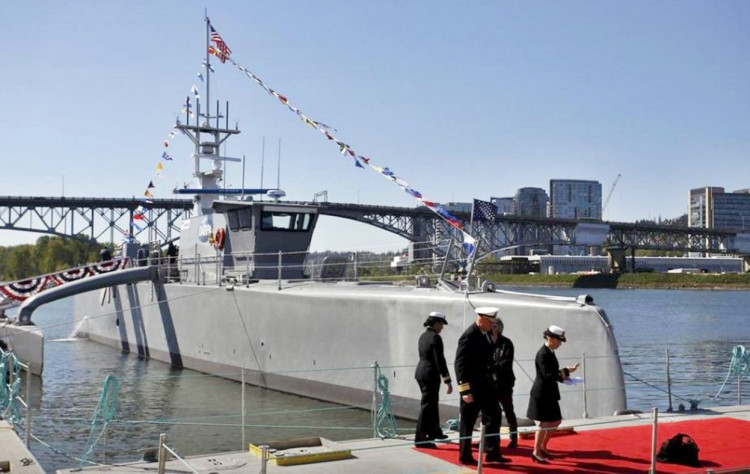China is testing a copycat version of Sea Hunter, the U.S. Navy's oceangoing autonomous unmanned surface vehicle that hunts diesel-electric submarines.
The first photos of the clone on China social media show its version to be almost indistinguishable from Sea Hunter - down to the outriggers that stabilize the robot trimaran. The photos were taken in August 2019 and have only now been published.
The hull of the China vessel, however, is longer and wider than Sea Hunter which translates to a greater displacement.
A notable difference is the outriggers which are closer to the hull. Another difference is the China boat has a large superstructure. However, this may be there only for manned tests.
The China vessel was built by Jiang Tongfang New Shipbuilding Co., Ltd. in Jiujiang City in Jiangxi province. It is not known if the boat was built for the People's Liberation Army Navy or if it is a private venture to be sold later. Jiang Tongfang has built only a few ships for the PLAN.
China news media says only one prototype of the vessel exists and it was still at a shipyard on the Yangtze River - 760 kilometers from the ocean.
Sea Hunter was built as part of a program launched in 2010 by the U.S. Defense Advanced Research Projects Agency. This program was originally named the anti-submarine warfare continuous trail unmanned vessel. Sea Hunter was built in 2015. Sea Hunter is a trimaran design 40 meters long and weighing 127,000 kilograms. It has a top speed of 27 knots or 50 km/h. Sea Hunter, the world's first robot warship, is capable of patrolling 18,500 km (10,000 nautical miles) of ocean without a human crew.
Sea Hunter entered service in 2018 after years of tests. Sea Hunter's job is to locate quiet diesel electric submarines operated by China and Russia. It is designed to lock on to an enemy submarine and trail it continuously. It has the ability to destroy enemy submarines.
It is armed with Mark 48 anti-submarine wire-guided torpedoes weighing 1,600 kilograms. The torpedo is nicknamed "the keel buster" because its warhead is designed to explode beneath the keel of an enemy ship.






